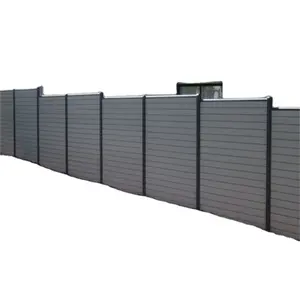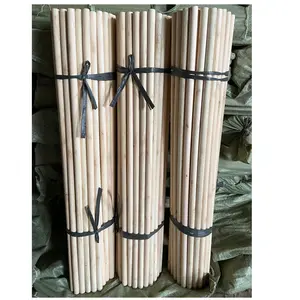
Outdoor Aluminium Garden Fencing Prices Aluminium Post Slat Fence Panels Privacy Aluminium Fence With Horizontal Slats


High Quality Outdoor Aluminum Picket Fence Panel Zinc Steel Fence System No Rust Fence For Home Garden




















Discover the transformative power of treated fence posts, a significant innovation in gardening and outdoor aesthetics. This article delves into the intricacies of treated fence posts, exploring the wood treatment process, the different types available, and their numerous benefits. Learn how these posts can revolutionize your garden, enhancing its aesthetics, promoting sustainability, and improving safety. Whether you're planning a garden makeover or simply curious about this sustainable building material, this article will reveal how treated fence posts can transform your outdoor space.
Treated fence posts are a product of wood treatment, a process where preservative chemicals are forced into the wood under pressure. This treatment extends the wood's lifespan, making it a sustainable building material. Standards for these treatments are set by recognized industry bodies, ensuring quality and suitability for use. Treated wood can be used in various applications, including the construction of raised vegetable gardens and fences. The green color you see on treated wood is due to the chemical reactions between the preservative components and the wood.
Wood treatment involves the application of preservatives to enhance its durability and resistance to threats like decay and pests. There are two main methods: pressure and non-pressure treatments. Pressure treatment involves immersing the wood in a preservative within an airtight steel cylinder, then applying pressure to drive the chemical into the wood. Non-pressure treatments include brushing, spraying, pouring, dipping, and soaking, among others. The effectiveness of a wood preservative largely depends on its penetration and retention, which can vary based on the tree species and treatment process used.
Treated fence posts are made from wood that has undergone a pressure treatment process. This involves the application of a preservative formulation that is forced into the wood under pressure in a large cylinder. The preservatives used are registered pesticides, regulated by recognized environmental protection bodies and standardized by industry associations. The treatment extends the life of wood, making it resistant to decay and termite attack. There are different types of treated fence posts, such as those treated for above ground use and those treated for ground contact use, each with specific applications and benefits.
Pressure treated fencing offers several benefits. Its durability is thanks to chemical preservatives forced deep into the timber, protecting it from decay, rot, and insect damage for a long time. It's also affordable, making it a cost-effective choice for those on a budget. Additionally, it's low maintenance, as it's resistant to rotting and pests. The pressure treated wood is toxic to insects, saving you money from repair and maintenance in the long run. Despite these treatments, the fencing maintains a natural look, blending seamlessly into any garden home.
Treated fence posts, such as those made from cedar, redwood, black locust, and IPE, offer impressive durability and longevity. Cedar, for instance, can last up to 30 years due to its natural resistance to rot and insects. Redwood, with its dense fibers, is less prone to warping and can withstand heavy rainfall. Black locust is resilient to humidity, rot, and mold, making it ideal for high-moisture areas. IPE, a tropical hardwood, is resistant to rot, pests, and even fire, requiring no chemical treatment for preservation. These treated woods provide a long-lasting fence solution, making them a cost-effective choice in the long run.
Treated fence posts are designed to resist pests, including termites. The wood undergoes pressure treatment, where it's infused with chemicals that deter pests. The chemicals used have evolved over time, from chromated copper arsenate (CCA) to the more environmentally friendly alkaline copper quat (ACQ). However, it's important to note that while this treatment makes the wood termite-resistant, it doesn't make it termite-proof. Over time, changes in the wood can make it more susceptible to termite infestation. Regular checks for signs of termite infestation, such as a swollen and blistery appearance in wood, are recommended.
Pressure-treated lumber, while more expensive than natural wood, is less expensive than aluminum, steel, or other building materials. The quality of galvanized steel comes with a heftier price tag than a pressure-treated wood post. However, galvanized steel will last two to three times longer than a pressure-treated wood post. When you complete a yearly cost breakdown, galvanized steel comes out ahead. As you make the decision whether to select galvanized steel posts or pressure-treated wooden posts, the choice is largely based on budget.
Revolutionizing your garden with treated fence posts can be a game-changer. These posts provide a visual barrier, preventing pets from trampling through plants. Despite concerns, the chemicals used in pressure-treated wood are generally considered safe for a wide variety of uses. However, it's essential to read the manufacturer's literature to confirm its recommended uses. If you're growing ornamental plants near the fence line, the risk of chemical harm is low. Even for those insisting on a 100% organic garden, the environmental impact of frequently replacing untreated wood fences might outweigh the benefits.
Treated pine fences have proven to be highly effective in beautifying an outdoor environment. The natural beauty and versatility of these fences make them a popular choice among homeowners. The color of the wood can easily blend into any outdoor landscape, adding subtle warmth and charm. Many homeowners have reported receiving compliments on their new treated pine fence, with neighbors noting its alluring look and sturdy build quality. By combining water repellency, environmental protection, durability, and aesthetically pleasing options, treated pine fences can make any outdoor space look beautiful while still being functional.
In 2004, manufacturers of pressure treated wood voluntarily replaced wood treated with chromated copper arsenate (CCA) with safer alternatives. CCA, which leached toxic arsenic into the soil, was replaced by alkaline copper quaternary ammonium (ACQ) or copper azole (CA). These new treatments leach trace amounts of copper but not toxic chemicals. This shift in wood treatment practices promotes sustainability by reducing the release of harmful substances into the environment, making treated fence posts a more eco-friendly choice for your garden.
Treated pine wood fences not only enhance the aesthetics of your garden but also significantly improve its safety. The strength and durability of these fences provide a secure boundary, protecting your property from unwanted intruders. Moreover, the pressure treatment process makes the wood resistant to termites and other timber-boring insects, reducing the risk of structural damage. With proper maintenance, these fences can last for decades, ensuring long-term safety for your garden. However, it's important to ensure that the treatment process follows approved methods to prevent any potential environmental harm.
In conclusion, treated fence posts offer a myriad of benefits, from durability and pest resistance to cost-effectiveness. They not only enhance the aesthetics of your garden but also promote sustainability and improve safety. The shift from harmful chemicals like CCA to safer alternatives like ACQ and CA has made these posts an eco-friendly choice. However, it's crucial to remember that while these posts are resistant to pests and decay, they are not entirely immune. Regular checks and maintenance are necessary to ensure their longevity. Whether you're a gardening enthusiast or a homeowner looking to improve your outdoor space, treated fence posts can be a game-changer, revolutionizing your garden while offering a sustainable, cost-effective, and aesthetically pleasing solution.